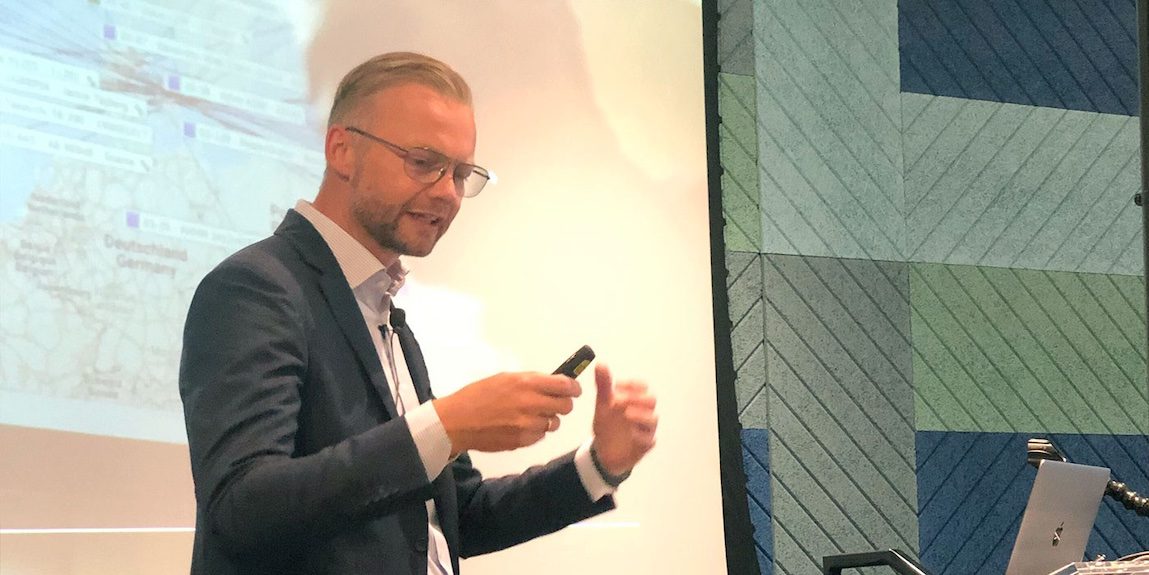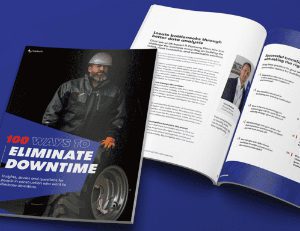

We’ve been talking about downtime for a few years and it is still a bit of an abstract word. To help we have developed our Eliminate Downtime Model – so far, a lot of the industry has focused on the machines where Downtime is concerned, but there are all these other categories and elements.
We wanted to portray how multi-dimensions the challenge is, and we’d welcome feedback from all areas of the industry on this model.
The increasing amount of data from many sources, and the collaborative effort is the inspiration for the movement – what could we do if we drew out all of these data points and raised the conversation across the industry?
What has become apparent in many situations is that every stakeholder (or group of stakeholders) in this industry is working in silos and almost paranoid about sharing ideas or data. There’s something fundamentally wrong with that image, and we’d like to inspire everyone to think differently and look at the big picture.
Our industry is a puzzle with a jumble of interconnecting pieces – highly advanced machines, BIM, people, through to other equipment that is not as mature.
We want to offer a paradigm shift, a new way to connect and collaborate.
Soeren Brogaard
If we look to other industries, we see more Open Source application, and sharing of data, and this has been happening for decades, but it feels like we’re stuck in construction. It’s time to change.
In the aviation industry, independent analysis is performed to determine the cause of errors when an accident happens. It is also used to analyze a database of past accidents in order to predict and prevent recurrences of accidents. By sharing these analyses globally and applying their recommendations to continually improve processes, over the last 50 years or so of airline travel, the industry has reduced fatalities from life lost per one million miles travelled, to one per billion miles.
Compare and contrast this record with the global healthcare industry where mistakes made during routine admissions cost the lives of some 440,000 people each year. Often bound by privacy as well as litigation concerns, the healthcare industry sometimes feels like it’s governed by an omeurta – a code of secrecy.
By creating a learning culture to which the whole industry was committed, by openly sharing mistakes and critical errors, aviation has proven that in doing so you can not only improve your own business but the entire industry. There’s a lesson in this, and it’s not just that because of sharing you’re in safer hands flying than in ER.
As another example, when I was working at Schneider Electric. The way we collaborated as an ecosystem and engaged the community was very open – wherever there was a problem, we shared it online. We asked the stakeholders to propose ideas on how to solve it. Some people didn’t like the exposure of the problem, but the way we saw it was that everyone experiences problems – it’s just how you deal with it and how you solve it that makes the difference. Our system allowed everyone to contribute to the solution – not just tech support. Engineers got involved with amazing feedback to the product manufacturers. At the time, we used it as a service differentiator to show how quickly we could solve problems.
A lot of the Downtime challenge is how to simplify and standardize systems in order to automate processes. If we look at the data center industry, when the Open Compute project came along, at first the hardware providers were on the fence. They thought, ‘Who was Facebook to tell them how to create products for a data center’? Now we’re 8 or 9 years further on and Facebook has made Open Compute freely available to the industry. For those of you not familiar, OCP has rethought the design for power distribution and cooling within data centers and removed nearly 50% of the cost.
For us, today, in the construction industry, we have to get the foundation right: we have to understand and standardize the data from the various disparate systems. We’re not quite where other industries are, but it’s now within our grasp.
As you look towards your own companies, who is your Chief Data Officer? Data as an asset is making its way onto the balance sheet, and it is fast becoming the asset of our generation. We’re at the beginning of the journey to structure our data in a uniform way.
We have made some progress with AMP2.0 ISO standards, where 35 data points were agreed upon, but at Trackunit, we work with 50 different OEMs and they all have their own way of defining criticality. This is totally for us to solve as an industry. It’s not just rental companies who are fed up with all these systems being unique. It needs to be harmonized, standardized and simplified.
The construction industry needs to learn to collaborate if it is to advance. We urgently need to break down siloed thinking, and we need to develop universal standards so that we can share the data which will help us advance the cause to eliminate downtime.

Never miss an insight. We’ll email you when new articles are published on this topic.


